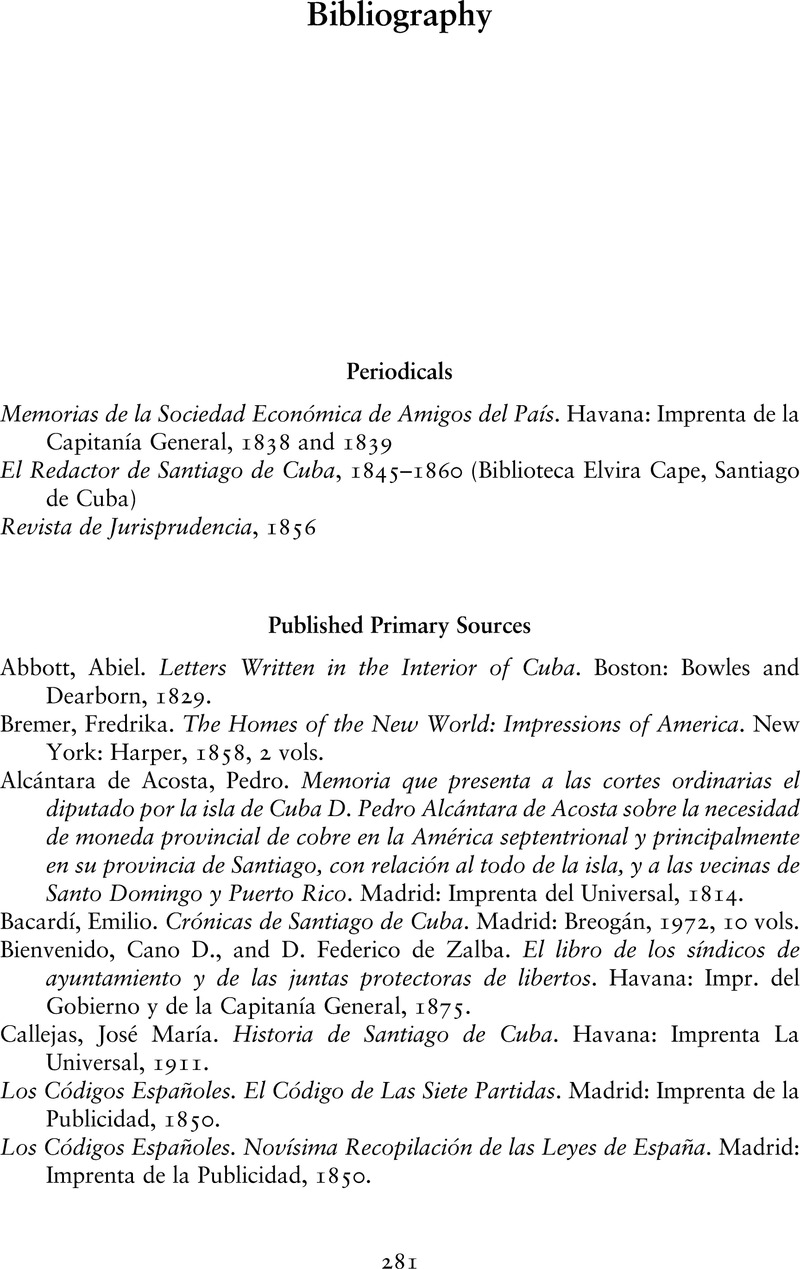Book contents
- Patchwork Freedoms
- Afro-Latin America
- Patchwork Freedoms
- Copyright page
- Dedication
- Contents
- Figures
- Maps
- Tables
- Acknowledgments
- Manuscript Sources and Abbreviations
- Note on Language and Region
- Maps
- Introduction
- 1 Unenclosed People, Unenclosed Lands
- 2 Foreign Implants
- 3 Keeping People Put
- 4 Manumission’s Legalities
- 5 “A Freedom with Further Bonds”
- 6 “Para levantar los negros y proclamar la República”
- Conclusion
- Book part
- Bibliography
- Index
- References
Bibliography
Published online by Cambridge University Press: 10 February 2022
- Patchwork Freedoms
- Afro-Latin America
- Patchwork Freedoms
- Copyright page
- Dedication
- Contents
- Figures
- Maps
- Tables
- Acknowledgments
- Manuscript Sources and Abbreviations
- Note on Language and Region
- Maps
- Introduction
- 1 Unenclosed People, Unenclosed Lands
- 2 Foreign Implants
- 3 Keeping People Put
- 4 Manumission’s Legalities
- 5 “A Freedom with Further Bonds”
- 6 “Para levantar los negros y proclamar la República”
- Conclusion
- Book part
- Bibliography
- Index
- References
Summary

Information
- Type
- Chapter
- Information
- Patchwork FreedomsLaw, Slavery, and Race beyond Cuba's Plantations, pp. 281 - 300Publisher: Cambridge University PressPrint publication year: 2022
